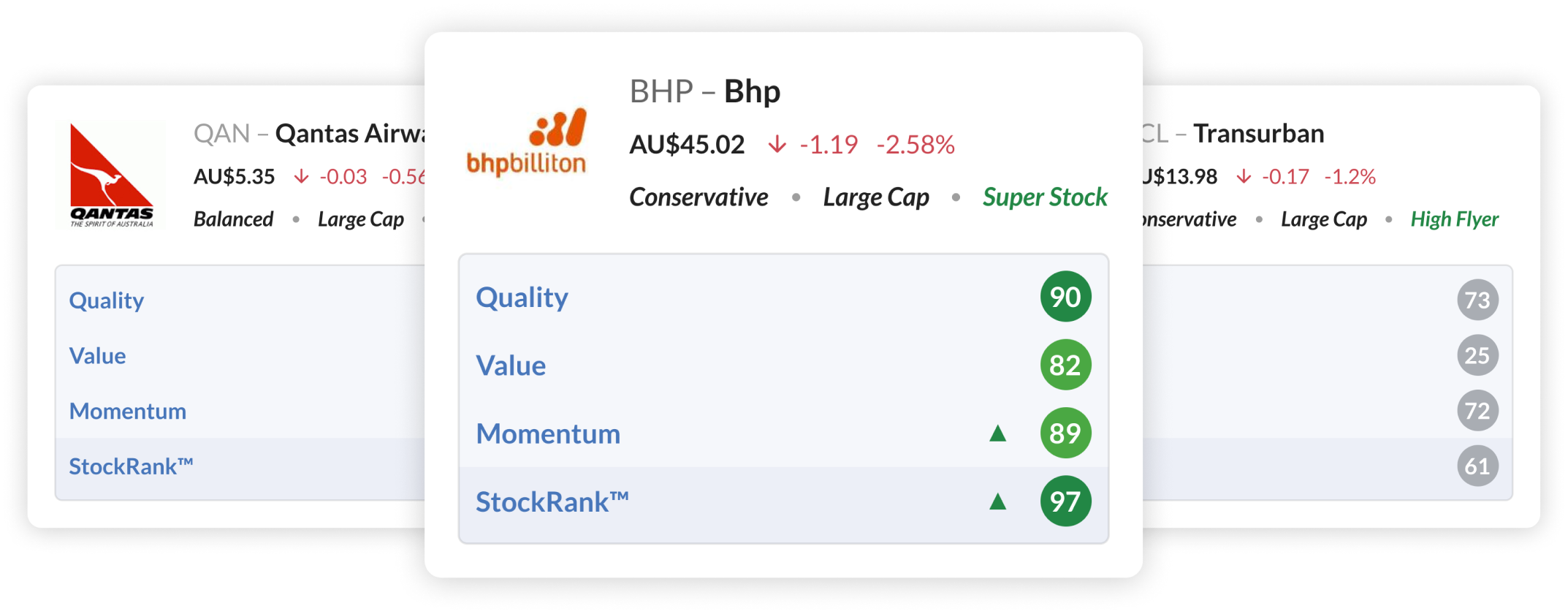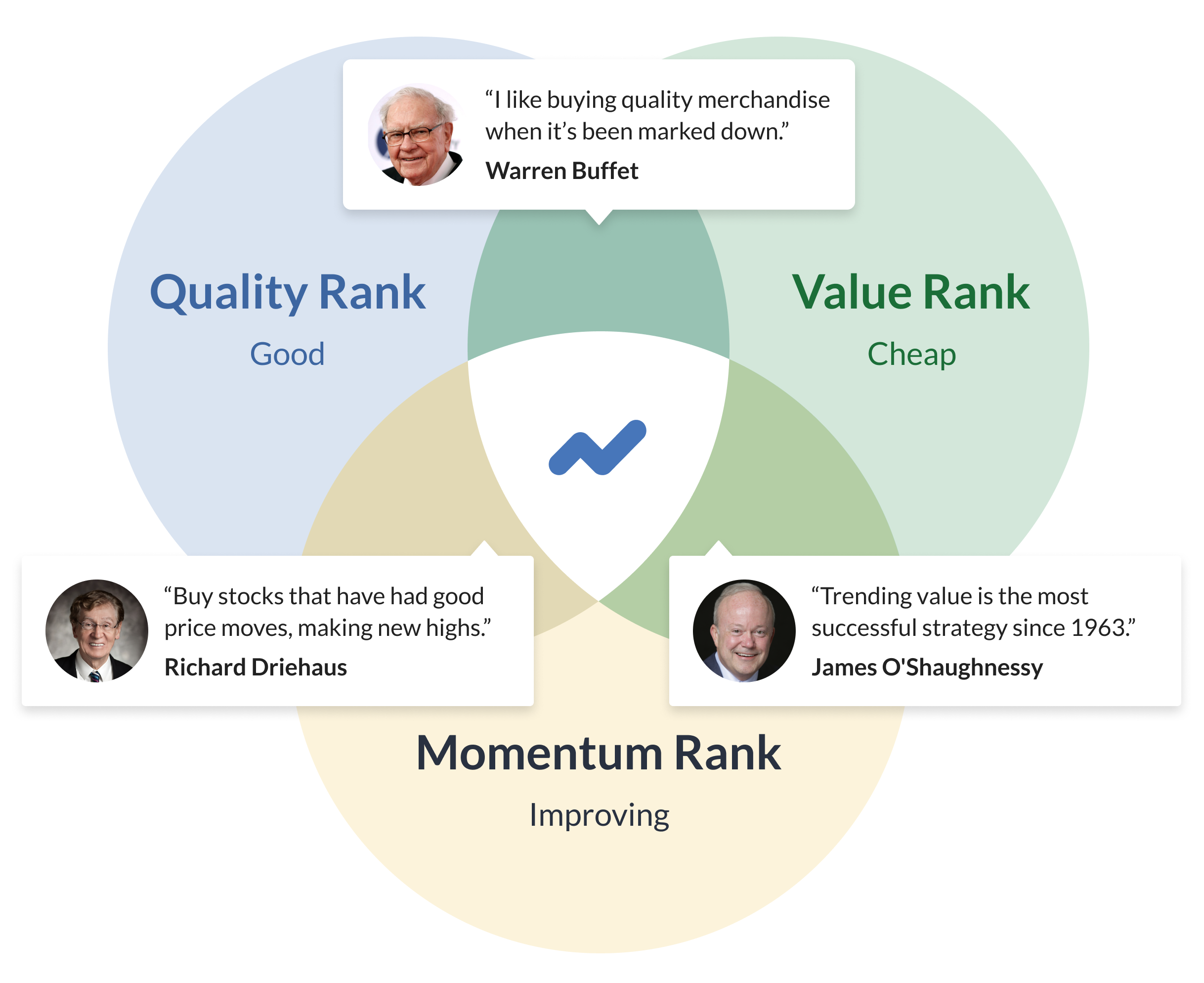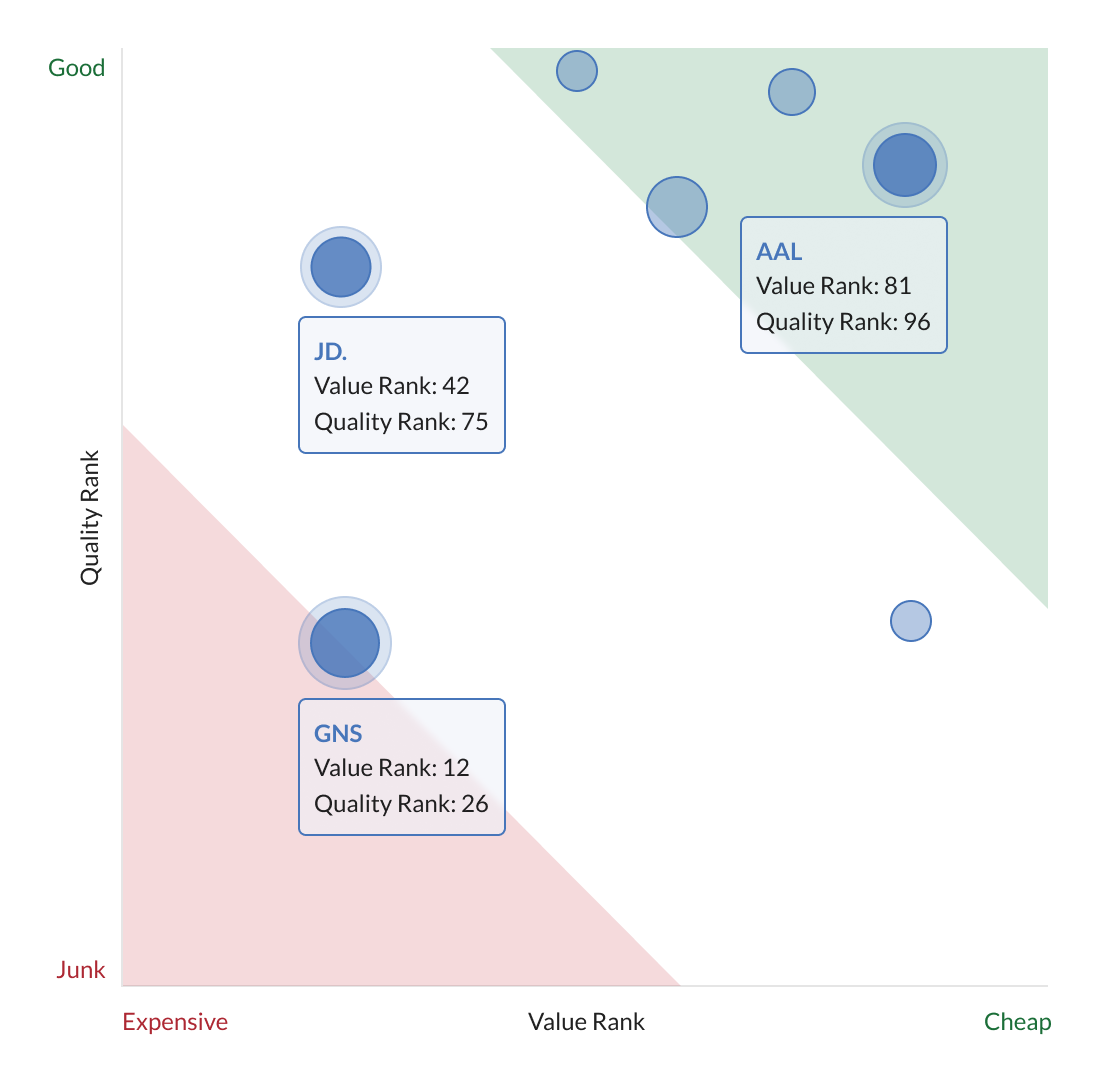How stock-pickers can use the StockRanks to enhance their portfolios
Great stock ideas can come from anywhere: a tip in the news, a company report, or even a trip to the shops. The thrill of picking stock market winners and watching their results compound away in your portfolio is second to none. But if you don't know what you are doing, you can easily buy a "sucker stock".
Having the StockRanks in your armoury will help you place higher probability bets, avoid the worst of the market and separate the wheat from the chaff. They are a great, time saving tool for stock-pickers.
In this article, we explain how stock-pickers can use the StockRanks to find and assess new investment ideas and to review their current holdings.
Quickly sense-check any stock
Simply checking the StockRank of a new stock idea gives you an instant fix on the kind of stock you may be dealing with - which can be enough to know whether it's an immediate pass or not. Some have said that every time they hear of a new stock tip, they "sanity check" it using the data provided. It's a huge time saver.
The key information provided is the 'fingerprint' of the stock, with detail across relative ranks of Quality, Value, and Momentum.
When comparing some of this data against your rules/checklist, you can immediately assess whether it's worthy of further time. At this stage, all a stock picker should be asking themselves is this, "should I research this share further?"
Develop your personal investing style
An understanding of the core factors of Quality, Value and Momentum and how they interact with each other can help investors develop a style that best suits them. A useful illustration is provided in the Venn Diagram below.
At the intersection of each of these factors reside the strategies of the best investors. If you find yourself drawn to some of these individuals or their styles, read their books, learn more on Youtube and develop a set of selection criteria based on their teachings.
The following list of multi-factor approaches should help investors identify which style they are drawn to:
Quality & Value - good, cheap stocks. Best for those who can't abide overpaying for a stock. Popular with serious investors with longer term timeframes. Much literature exists about Warren Buffett's[1] approach, while Joel Greenblatt's[2]book is the best introduction to this style.
Quality & Momentum - good, strong stocks. Best for those who like to own glamorous, fast-growing, breakout stocks. Popular with goal-oriented, traders with active timeframes. Some of the best literature on this style is by Bill O'Neill[3] and Mark Minervini[4].
Value & Momentum - cheap, strong stocks. Best for those who don't mind owning unpopular shares in recovery. Popular with geeks and those who like to go against the grain. Some of the best literature is in academic papers, but James O'Shaughnessy[5] and Charles Kirkpatrick's[6] books are better for novices.
Quality, Value, and Momentum - good, cheap, strong stocks. Best for those who don't mind missing out on the exciting stories. Popular with generalists. Jim Slater's Zulu Principle[7] covers this range of factors from a stock picking perspective.
Stockopedia's screening tools including our pre-built "guru screens" allow you to quickly assemble a list of stocks that meet any of the styles listed above, and many more. This gives you a fertile hunting ground for further research.
Monitor the ranks of your portfolio holdings
Remember that the more stocks you own, the more your portfolio outcome will tend towards the average factor exposure of the portfolio. Given the returns to higher ranked shares have dominated historically, it makes sense to skew your portfolio towards them. A simple rule of thumb is to weight it towards higher ranked "winning style" shares, and less towards lower ranked "losing style" shares.
A clear visualisation is provided in the graphic below, which is a portfolio 'bubble chart' that compares the Value Rank of each holding (in blue) versus the Momentum Rank.
In a strategy that attempts to skew a portfolio towards cheap, strong stocks (high value, high momentum), investors would want to see most of the blue portfolio bubbles in the top right segment of this chart.
Final thoughts for stock pickers
It's worth reiterating that the StockRanks are statistical measures which work best for across broad portfolios of stocks. They are not buy recommendations, and are not a short-cut for discretionary stock-pickers to bypass their research process. So don't skip the hard parts. Develop your rules. Do the research. Stick with your process.
- Robert Hagstrom. The Warren Buffett Way.
- Joel Greenblatt. The Little Book that Beats the Market.
- William O'Neil. How to Make Money in Stocks. 2009
- Mark Minervini. Trade Like Stock Market Wizard.
- James O’Shaughnessy. What Works on Wall Street - 4th Edition.
- Charles Kirkpatrick. Beat the Market: Invest by Knowing What Stocks to Buy and What Stocks to Sell.
- Jim Slater. The Zulu Principle.



